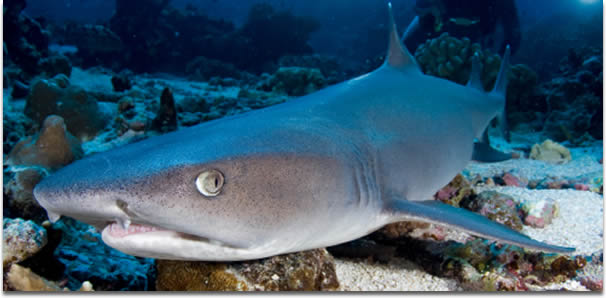
Whitetip reef shark – Triaenodon obesus – laying on the sea floor in French Polynesia
Many shark species (including the Great White Shark) need to propel their body through water at all times to ensure that fresh water is constantly flowing over their gills, which enables their oxygen levels to be maintained. For this reason, it was supposed for a long time that sharks did not, in fact, sleep. However, sharks need to rest at some stage and different species accomplish this rest in different ways.
Those species that need to keep moving are able to rest one side of their brain at a time. Their eyes stay open and alert to dangers and their brain is active enough to respond to some degree. The Spiny Dogfish’s swimming is conducted by its spinal cord, rather than its brain, allowing it to sleep quite comfortably while still moving through the water. This is similar to the type of activity that happens when human beings walk and talk in their sleep. There are also shark species that rest on the ocean floor during their rest period. Still, their eyes remain open and able to track prey and divers around them. So, rather than formal ‘sleep’, sharks tend to have periods of inactivity.
Some sharks have what is known as a circadian rhythm. This is an internal timer that dictates when they should rest. This is the case in humans as well, who tend to sleep during the night. This is why some sharks can be termed nocturnal, such as the Swell and Horn sharks.
This is not true of all shark species, though, and many reserve sleep for when they are well fed and within a relatively safe environment.